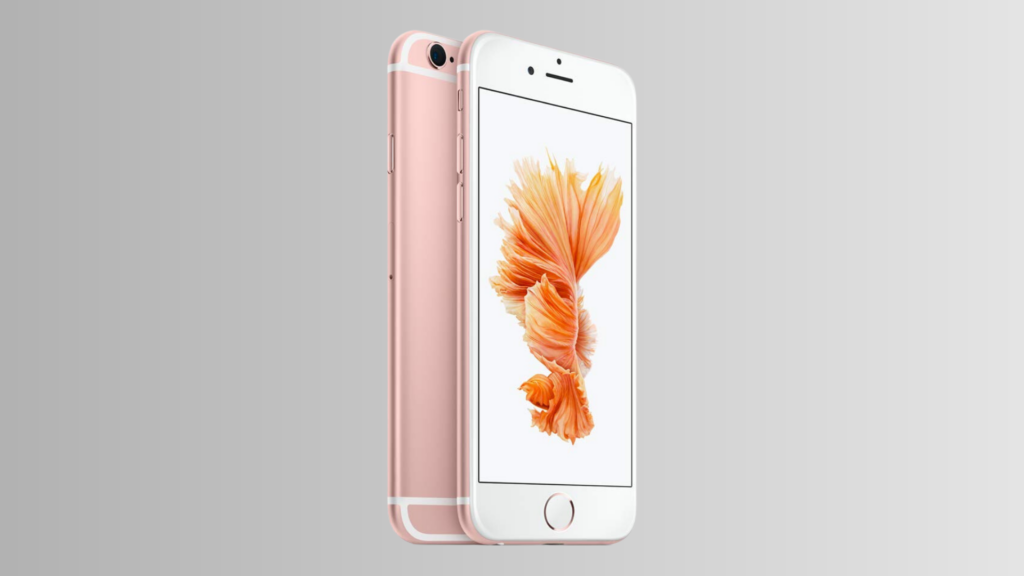What Does the S in iPhone 6S Mean: Decoding the Mystery

The iPhone 6S, released in 2015, is an iconic smartphone that marked a significant improvement over its predecessor, the iPhone 6. A question that has often surrounded the iPhone 6S is the meaning behind the “S” added to the name.
While Apple has never officially clarified the significance of the “S” There are numerous speculations about the meaning of the ‘S’ in the iPhone 6S, which we will thoroughly explore and delve into in this article. Each theory provides an intriguing perspective on Apple’s naming conventions, revealing layers of strategy and marketing ingenuity.
Key Takeaways
- The meaning of the “S” in iPhone 6S is not officially confirmed by Apple
- One theory suggests “S” stands for sensitivity, referring to the 3D Touch feature
- The “S” in previous models like iPhone 4S and 5S is rumored to represent Siri and security, respectively
What the ‘S’ Stands for in iPhone 6S
The ‘S’ in iPhone 6S has been a topic of speculation for many Apple enthusiasts and tech experts. While there is no official statement from Apple, several theories have risen over time.
One plausible explanation is that the ‘S’ stands for “sensitivity.” The iPhone 6S introduced 3D Touch, a feature that allows the device to measure pressure sensitivity on the screen. Users can access different menus and options depending on the pressure applied, creating a more interactive experience.
Another theory suggests that the ‘S’ represents “successor.” This idea comes from observing the release patterns of iPhone models. Following the release of a numbered device—such as the iPhone 4 or 5—an upgraded version with an ‘S’ is typically launched. These devices often have similar designs but provide significant improvements in performance, software, and other aspects. Thus, the release of the iPhone 6S followed the iPhone 6.
Ultimately, the meaning of the ‘S’ in iPhone 6S remains open to interpretation. Regardless of its implied meaning, the iPhone 6S, as with other ‘S’ models, brings advancements in technology and innovation to the table—hallmarks of Apple’s commitment to pushing the boundaries of what mobile devices can do.
Evolution of the ‘S’ Models
The iPhone ‘S’ models have been a significant part of Apple’s product line since the introduction of the iPhone 3GS in 2009. The ‘S’ moniker has come to symbolize a more incremental upgrade in the iPhone series, focusing on improved performance and additional features while maintaining the overall design of the previous model.
In 2009, the iPhone 3GS was introduced as an improvement over the iPhone 3G. The ‘S’ in 3GS was said to stand for Speed, as the device offered better performance and faster response times compared to its predecessor. With double the RAM and better processing power, the iPhone 3GS was an important step forward for the iPhone series.
Later in 2011, Apple revealed the iPhone 4S, with the ‘S’ in this case rumored to represent Siri – Apple’s voice-activated personal assistant. The iPhone 4S was also the first iPhone to feature a dual-core processor, which substantially improved the device’s performance. Additionally, the 4S came with an upgraded camera and the introduction of iCloud, Apple’s cloud storage service.
The iPhone 5S, launched in 2013, continued the ‘S’ series trend. This time, the ‘S’ is believed to have stood for Security, as the iPhone 5S introduced Touch ID, a biometric fingerprint recognition feature. This innovation brought a new level of security and convenience to the iPhone lineup, allowing users to unlock their devices and make purchases using their fingerprints.
Lastly, the iPhone 6S, released in 2015, presented a more ambiguous meaning behind the ‘S.’ Some speculate that it stands for Sensitivity, referencing the phone’s introduction of 3D Touch features. The iPhone 6S allowed users to access different functions and app shortcuts based on variations in screen pressure, adding a new dimension to the smartphone user experience.
Throughout the years, the ‘S’ models have played a crucial role in refining the iPhone experience. While these devices may not represent complete redesigns, they offer significant improvements that showcase Apple’s commitment to innovation and user satisfaction.
Comparison of iPhone 6 and iPhone 6S
While the iPhone 6 and iPhone 6S may seem almost identical at first glance, several key differences set the two devices apart. In this section, we will delve into these distinctions to help understand each device better.
One noteworthy difference between these two iPhones is the introduction of 3D Touch in the iPhone 6S. This feature allows users to access various functionalities by applying different levels of pressure on the screen. The iPhone 6, on the other hand, does not offer 3D Touch capabilities.
Another major contrast emerges in the realm of performance. The iPhone 6S comes equipped with a faster A9 chip compared to the iPhone 6’s A8 chip. As a result, the iPhone 6S delivers considerably improved processing power and overall performance.
Camera quality is an area where the iPhone 6S holds a significant advantage. The 6S features a 12-megapixel rear-facing camera, a leap from the 8-megapixel version found in the iPhone 6. Furthermore, the iPhone 6S boasts a 5-megapixel front-facing camera for superior selfie capabilities, compared to the 1.2-megapixel front-facing camera on the iPhone 6.
The following table summarizes the core differences between the iPhone 6 and iPhone 6S:
| Feature | iPhone 6 | iPhone 6S |
|---|---|---|
| 3D Touch | No | Yes |
| Processor | A8 chip | A9 chip |
| Rear Camera | 8-megapixel | 12-megapixel |
| Front Camera | 1.2-megapixel | 5-megapixel |
In terms of design and form factor, both iPhones showcase similar aesthetics with minor variations in dimensions and weight. The iPhone 6S is slightly thicker and marginally heavier than the iPhone 6, indicating the incorporation of robust materials and updated features.
Battery life is relatively comparable between the devices, with both iPhones capable of providing sustained usage throughout a typical day.
Key Features of the iPhone 6S
Improved Performance
The iPhone 6S boasts an upgraded Apple A9 system-on-chip, providing superior performance compared to its predecessor, the iPhone 6. This enhanced chip allows for faster processing and increased efficiency, ensuring smooth functioning and improved user experience.
Upgraded Camera
The iPhone 6S features a 12-megapixel rear camera, a notable improvement from the 8-megapixel camera on the iPhone 6. This upgraded camera can record up to 4K video at 30fps, offering higher resolution and quality. Furthermore, the iPhone 6S introduces the dynamic “Live Photos” feature, which allows users to capture short, moving images alongside traditional still photographs.
3D Touch Technology
One of the most significant additions to the iPhone 6S is the 3D Touch technology. This innovative feature allows users to interact with their devices by applying varying levels of pressure on the screen, enabling different actions to be performed. This added sensitivity makes navigating and using the iPhone 6S more efficient and intuitive.
So what does the “S” in iPhone 6S mean? While some believe the “S” stands for “Successor,” possibly due to the iPhone 6S’s improved features compared to the iPhone 6, the exact meaning of the “S” remains a topic of speculation. Regardless of its meaning, the iPhone 6S offers several key enhancements, including improved performance, an upgraded camera, and the introduction of 3D Touch technology.





